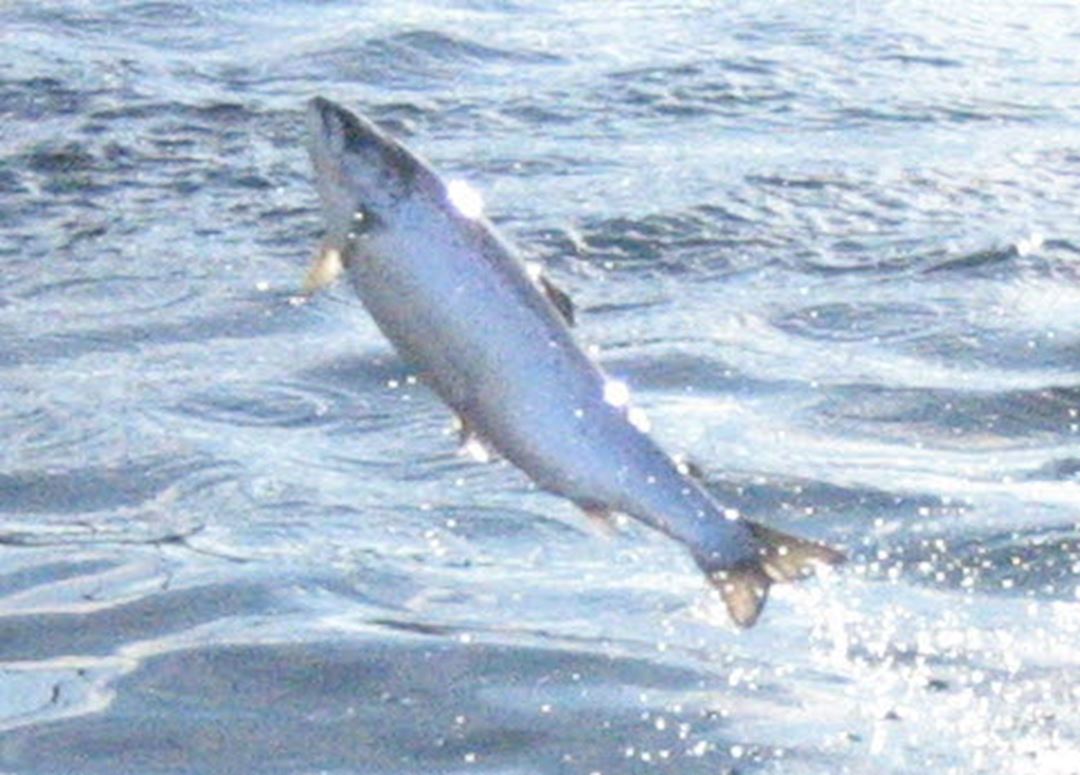Sea lice are an ongoing problem for Norway’s salmon farmers. They cause production inefficiencies, are expensive to treat and have been implicated in population declines of wild salmon and trout. Current control methods vary in effect and some discharge chemicals to the environment. Maintaining sufficiently low levels of sea lice on farmed salmon so that infestation pressures on wild salmon are acceptable remains a challenge.
Two common current methods to remove sea lice include medicated feeds and chemical baths. Both techniques involve loss of chemicals to the environment. Recently, the use of many sea lice treatment chemicals in bath treatments in Norway has increased. These chemicals are not re-collected and enter the environment after use.
The most common method of removing sea lice from large salmon is to enclose the water volume close to the surface (5-15 m deep), crowd the fish into this volume and add bath treatment medicine. Alternatively, fish are pumped into well-boats and medicine is added. In both methods, salmon are handled through crowding and possibly pumping. Water flows through the cage are reduced and water quality degrades rapidly. Oxygen is normally added to prevent hypoxia, but the delousing procedure is a stressful point in salmon production. The demands of sea lice treatments in large cages have also lead to accidents which have caused escapes of salmon into Norwegian waters in 2010 and 2011.
–In the search for alternate methods, we looked within the behavioural repertoire of salmon to identify natural behaviours that could be steered or amplified, such that sea lice removal treatments could occur with greater efficiency and cause less stress to fish than current techniques’ said Tim Dempster from SINTEF and the University of Melbourne.
–In an experiment at the Matre research station of the Institute of Marine Research in 2009, we observed an intense bout of jumping behaviour after we held the salmon away from the surface with a net roof for several days. This observation provided the spark to re-vitalise an old and largely forgotten method of removing sea lice’ said Tore Kristiansen from the Institute of Marine Research.
In the 1990s, attempts were made to get farmed salmon to remove sea lice themselves when they jumped by adding a thin layer of oil containing the treatment chemical pyrethrum on the surface. As salmon jumped through the surface, the oily treatment made contact with the sea lice and killed them. Early trials of this method were promising, however full-scale cage trials proved ineffective as the salmon did not jump frequently enough and the treatment chemical broke down in sunlight.
To enhance the effectiveness of this method, in 2010 the researchers tested whether the natural jumping behaviour of salmon could be increased and directed. In a 2000 m3 experimental sea-cage, they removed the ability of groups of salmon to access the surface for different periods (0-48 h) with a shallow cage roof and recorded their jumping after the surface became accessible again. Surface removal for 1 to 2 days induced 93% of salmon to jump in the 2 hours after surface access was re-instated. Salmon without surface access for 1 to 2 days jumped on average 2 to 3 times per fish. The results indicate that removal of surface access for short periods leads to loss of air from the swim bladder and cause slight negative buoyancy. This creates a behavioural driver for salmon to jump, swallow air and fill their swim bladders once surface access is re-instated.
–Now that a technique exists that means salmon jump frequently and predictably, the door is open for the development of new sea lice treatments that can be infused in oil’ said Frode Oppedal from the Institute of Marine Research.
This treatment delivery method can potentially be used in commercial cages with minimal harmful effects on the fish. If the method is successful in full-scale testing, it should provide more effective, reliable sea lice removal, cause less stress to fish and thus ensure better fish welfare.
For the first time, the method will enable the industry to retrieve sea-lice chemicals after treatment, with off-the-shelf oil re-collection technology, thus reducing the unwanted loss of chemicals to the environment. Ultimately, more efficient treatment of sea lice on farmed salmon may reduce economic burdens to the industry and reduce the amount of lice larvae that enter coastal waters from salmon farms that can infect wild salmon and trout. Both of these outcomes should increase the sustainability of salmon farming.
The research has been done within the Centre for Research-Based Innovation in Aquaculture Technology (CREATE, www.sintef.no/create), which is funded by the Research Council of Norway and partners in the centre. –With the support of the industry partners, CREATE has allowed us to attack old problems in new ways, opening unexpected avenues of research with good results’ said Arne Fredheim, Director of CREATE.
The full scientific article ‘Modifying Atlantic salmon (Salmo salar) jumping behavior to facilitate innovation of parasitic sea lice control techniques’ can be obtained at the journal’s website

